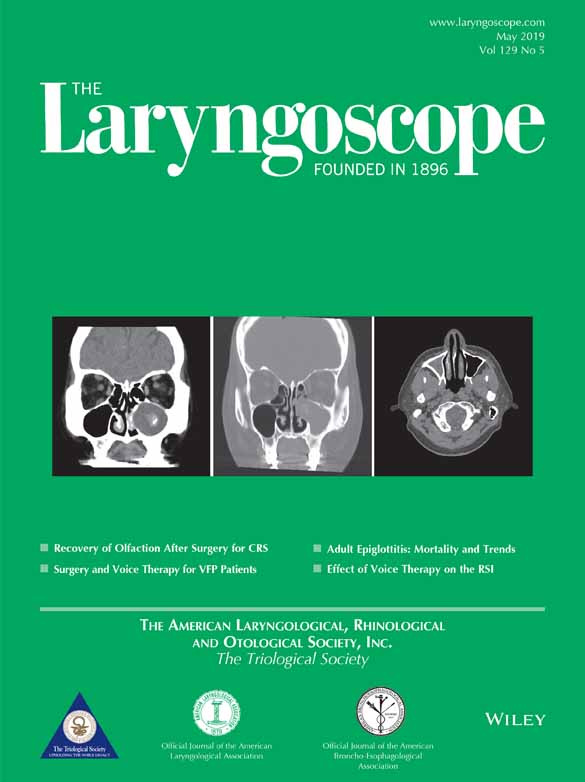Long-term analysis of transorally resected p16 + Oropharynx cancer: Outcomes and prognostic factors
Editor's Note: This Manuscript was accepted for publication on July 6, 2018.
This study was accepted for an oral presentation at the Annual Meeting of the Triological Society, National Harbor, Maryland, U.S.A., April 20, 2018.
The authors have no funding, financial relationships, or conflicts of interest to disclose.
Abstract
Objective
We observed high survival in a previous report of a p16-positive, oropharyngeal carcinoma (OPC) cohort treated primarily with transoral laser microsurgery (TLM) ± adjuvant therapy and followed for ≥ 12 months. To address long-term outcomes of primary transoral surgery for this unique disease, we present an updated analysis of our cohort with extended follow-up.
Methods
A prospectively assembled TLM cohort of 171 OPC patients was analyzed for disease-free, disease-specific, and overall survival (disease-free survival [DFS], disease-specific survival [DSS], overall survival [OS]) and functional outcomes, with a minimum follow-up of 60 months or to death.
Results
Median follow-up was 103 (60–201) months. Five-year DFS, DSS, and OS estimates were 85% (95% confidence interval [CI]: 80%–91%), 93% (95% CI: 89%–97%), and 90% (95% CI: 86%–95%). Recurrence occurred in 20 (12%; 7 locoregional, 13 distant); median time to recurrence was 18.8 months; and 90% occurred within 48 months. Age, smoking, American Joint Committee on Cancer 8th edition clinical tumor-category, pathologic tumor (pT)-category, pathologic tumor-node-metastasis (pTNM), and any adjuvant were significantly associated with disease-free survival in multivariable analyses, whereas pT-category, pN-category, TNM grouping, and angioinvasion were associated with DSS. A second primary developed in six (3.5%) patients. Indications for gastrostomy were recurrence/second primary (11), postadjuvant esophageal stenosis (6), comorbidities (3), and osteo/chondroradionecrosis (3); only seven (4%) had a gastrostomy tube in the absence of these factors, all of whom received adjuvant therapy. Two had a tracheostomy tube [chondoradionecrosis (1), recurrence (1)].
Conclusion
High 5-year survival and locoregional control were observed, with recurrence occurring more commonly as distant metastasis. The observed time to recurrence suggests posttreatment oncologic surveillance for at least 48 months. Identified prognosticators will inform adjuvant treatment considerations, trial planning, and patient counseling for long-term outcomes. Laryngoscope, 2018
Level of Evidence
2b Laryngoscope, 129:1141–1149, 2019




